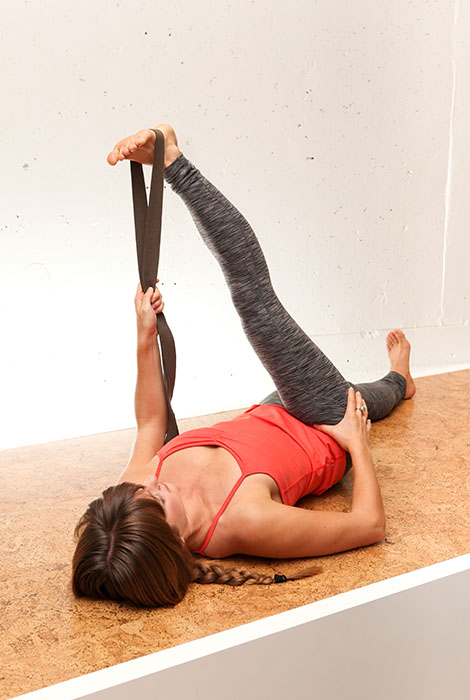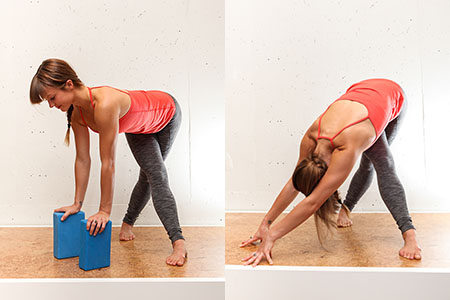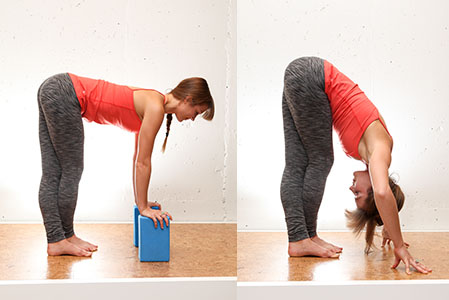Autumn Gear Guide
Find inspiration in our Gear Guide that will keep you out on your bike through wind or rain.
Download NowThese three poses help keep knees healthy after long days of riding.
People who do anything every single day, or multiple times a day, put pressure on specific muscles and joints over time, and bicycle commuters are no different, but yoga can help. While bicycles need to be tuned up, so do cyclists. Yoga can help ensure your own little engines are kept in tip-top working order.

The iliotibial band (IT band) is a thick sash of fascia, or layer of fibrous tissue, that begins at the hipbone and runs down the outer leg. You may find that after a ride your outer thighs feel as hard as bricks and even the outer part of the knees are sore and tender. When knees are constantly flexing and extending, IT bands can become inflamed. To keep knees healthy and to loosen up tightly woven fascia in the outer thigh, try these simple yoga postures. Each pose will stretch out the IT band, release tender points, and help improve local circulation.
To start, lie on the floor on your back with your legs stretched. Draw your right knee into your chest and then straighten the leg up toward the sky with a flexed foot. Loop a strap over the sole of your foot or grab the foot with both hands to go deeper. Take the foot or the strap in your left hand. Bring your right thumb into your right hip crease to anchor it down and to draw it away from your armpit to lengthen the waistline. Now guide the strap or foot slightly to the left, just past the midline of your body, until you feel a stretch running down the outer right leg. Breathe deeply, possibly drawing the leg further to the left with each breath. Switch sides.
+Benefits: Tones the core, opens the hip flexors and hamstrings, stretches the IT bands, and relieves the lower back.

Regular and advanced Parsvottanasana.
Stand with your feet hip distance apart and parallel, bend your knees, and come to a forward fold. Step your left foot back and pivot the foot at a 45-degree angle, so that the heel is rooted to the earth and the toes point to 10 o’clock. Extend both legs to straight. Inch your front foot to the left, past the midline, all the way to the edge of the mat. Now your legs are crossed. Keep the toes on your front foot pointing forward and the sole of the foot rooted into the ground. Fold your torso to the right, up and over your front leg. Keep your head heavy and your eyes soft. For more low back and hamstring support, place a block under each hand and micro bend the knees. Switch sides.
+Benefits: Stretches and opens the hamstrings, calves, IT bands, low back, and glutes; opens the backs of the knees and neck; provides a twist that stimulates the kidneys, abdominal organs, urinary bladder, and intestines.

Regular and advanced Uttanasana.
Standing, place your feet hip distance apart and parallel. Bend both of your knees and fold your torso over your legs coming to a forward fold. Cross your right foot to the outside of your left foot, so that your right calf is in front of your left shin. Touch the outer edges of the feet, and do your best to align the pinkie toes. If this feels difficult, place your right foot slightly further forward than your left. Eventually, both legs will be straight. To better support the hamstrings and low back, place a block under each hand. Relax your neck and head and breathe into the stretch.
+Benefits: Opens the hamstrings, calves, backs of the knees and IT bands; stretches the low back; and strengthens the thighs.
Photos by David Niddrie.
Find inspiration in our Gear Guide that will keep you out on your bike through wind or rain.
Download Now
Leave a comment